Liquid watercolors have become one of my favorite art materials. They are not as convenient as regular palette watercolors, which we use more often just because they don’t require as much set-up or clean-up, but they are just so beautiful to paint with. The colors are very rich and vibrant, and you can cover large areas with just a few strokes.
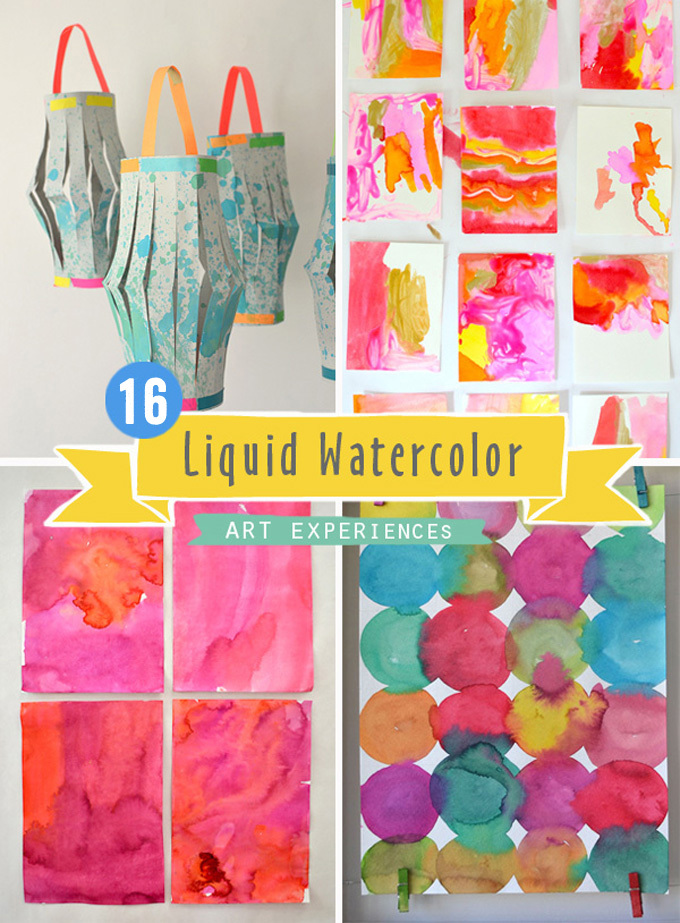
You can use them to splatter, bleed, paint on wood, use with different types of brushes (like toothbrushes and Q-tips), or use with eye droppers. Nothing matches their color and versatility!
Favorite Liquid Watercolor Supplies
[ I am a participant in the Amazon Services LLC Associates Program, an affiliate advertising program designed to provide a means for us to earn small fees at no cost to you by linking to Amazon.com and affiliated sites. ].
~ Amazon // Sax and Sargent
are both excellent brands. Sargent has gold
, silver
and pearl
~ Blick // I can get the neon pink here, also they have a nice antique gold, silver and pearl
~ Brushes // my favorite for use with liquid watercolors are these by First Impressions, size 8
~ Watercolor paper // I mostly use 9 x 12 size in the 90 lb weight by Canson
Favorite Liquid Watercolor Art Experiences
There are so many ways to use this material I think the list is probably exhaustive. But here are some of my faves (not in any particular order)!
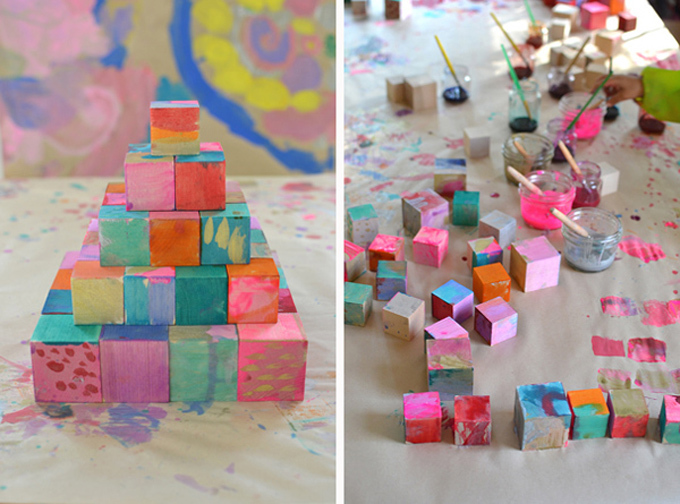
1. PAINT ON WOOD ~ We paint on wood quite a bit, especially wooden beads, and liquid watercolor work the best because they cover the surface quickly. The kids were so intrigued by how fast the color soaked into these wooden blocks, and how the color became more vibrant as it dried.
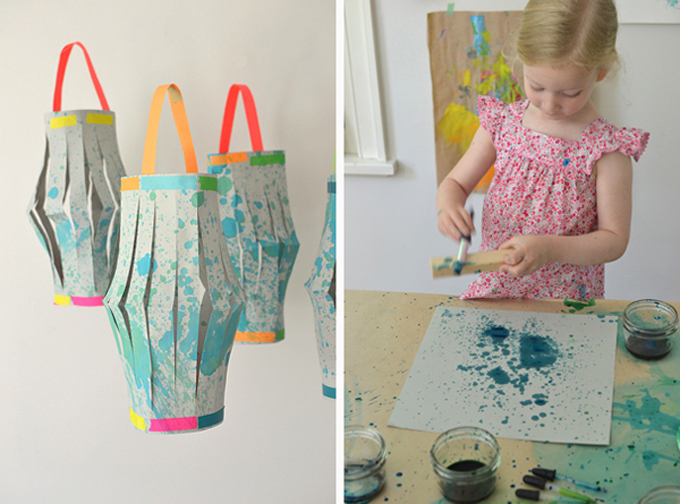
2. SPLATTER PAINT ~ Splatter painting is a favorite, and works best with liquid watercolor.
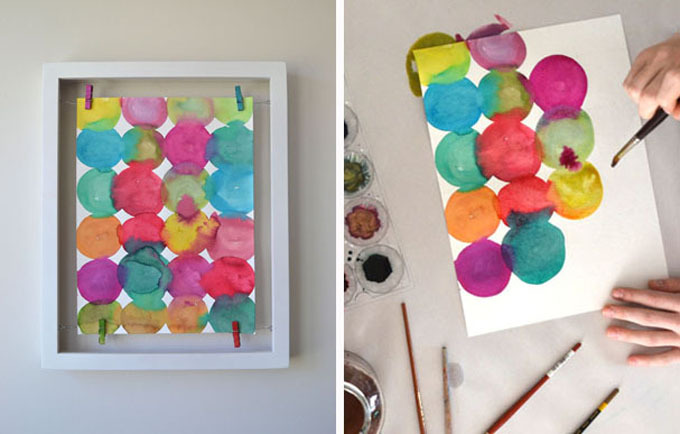
3. CIRCLE BLEED PAINTING ~ This project was really cool because the kids could watch the colors bleed into each other. Since the liquid watercolor goes on so quickly, it’s the best for bleeding like this because you need to work fast so the color doesn’t dry up.
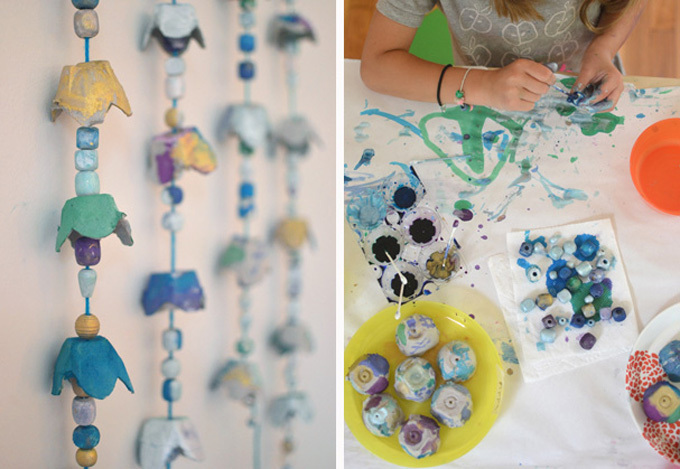
4. EGG CARTON PAINTING ~ Liquid watercolors worked really well with this project because the kids could paint the cartons and beads quickly and really saturate them with color.
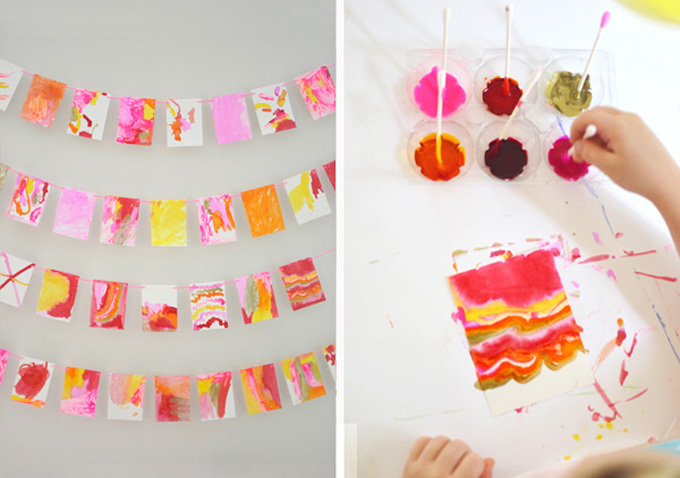
5. Q-TIP PAINTING ~ I use a lot of egg cartons to hold paint. Q-tips are a great alternative to paint brushes because they are short and won’t fall out. You can put one in each color, which eliminates the need for water to clean brushes. Plus, kids just love painting with Q-tips as a new experience.

6. PAINT ON NEWSPAPER ~ When you want to cover a large surface area quickly, liquid watercolor is the way to do it. And here, it just looks so beautiful contrasted with the black and white print of the newspaper.
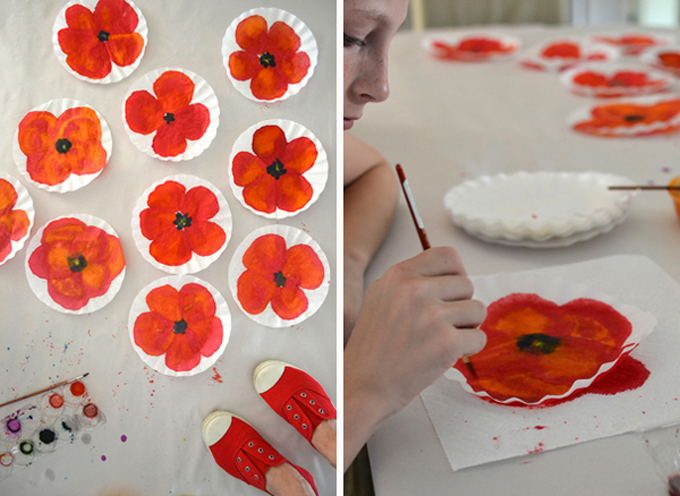
7. PAINTED COFFEE FILTERS ~ Painting with liquid watercolors on coffee filters is an amazing experience. The paint soaks in so quickly, and the vibrant color is unmatchable!
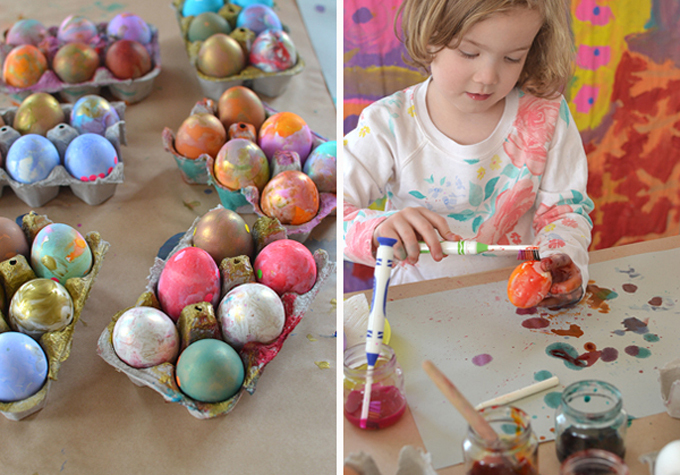
8. PAINT ON EGGS WITH TOOTHBRUSHES ~ Liquid watercolor in jars is very versatile. You can use many different types of painting brushes. Here the kids used toothbrushes to paint their eggs!
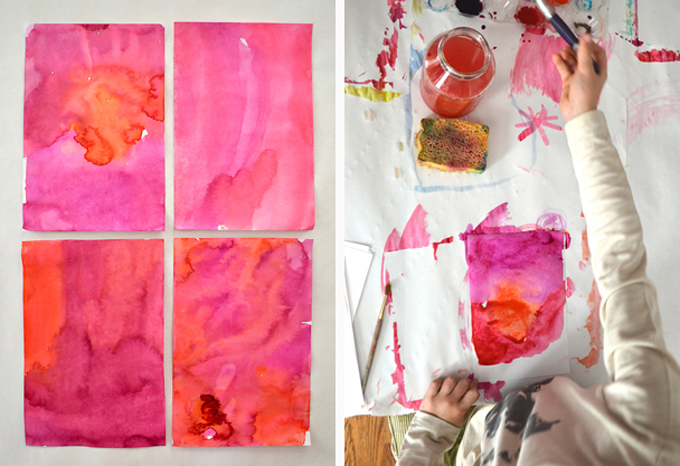
9. COLOR STUDY ~ Liquid watercolors are a great medium to mix and make your own colors. You wouldn’t be able to do this with regular, palette watercolors. Again, here you also have a really cool bleeding effect going on.
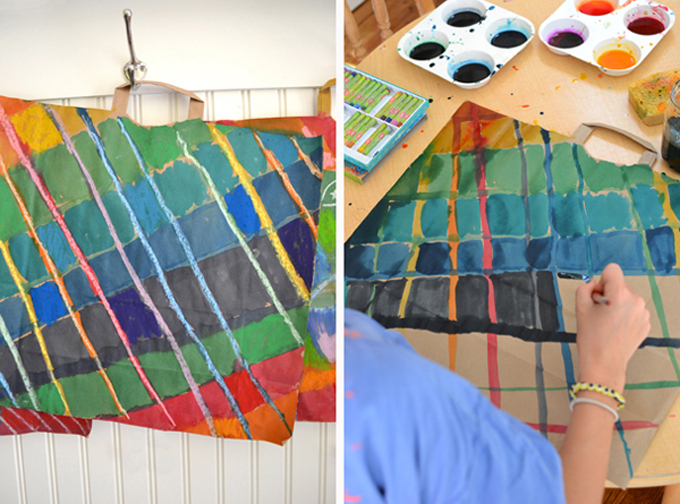
10. COMBINING LIQUID WATERCOLOR and CHALK ~ To get vibrant color on a brown paper bag, liquid watercolor is the best choice. Plus, since you can move quickly, using the chalk on the paper bag when it’s still wet is a very fun experience.

11. PIPETTES ON COTTON ROUNDS ~ We used pipettes or droppers in this art experience. Cotton rounds soak up liquid watercolors beautifully, and make perfect little planets in this mixed media solar system.
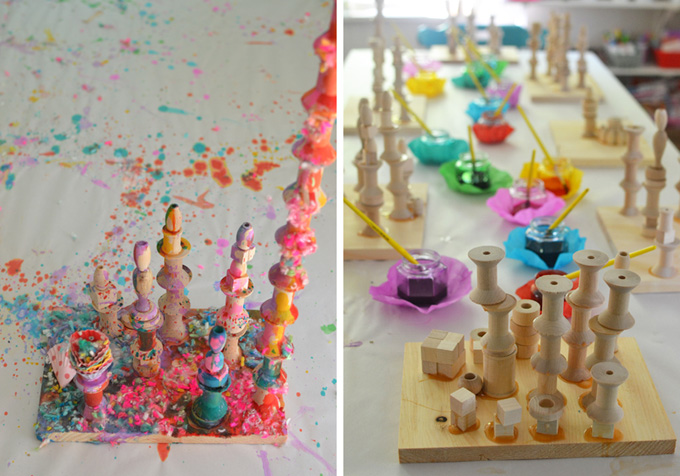
12. MIXED-MEDIA WOODEN SCULPTURES ~ Another example of using liquid watercolor on wood, his time we made giant mixed media towers! Reminder to save those yarn trimmings when making pom-poms.
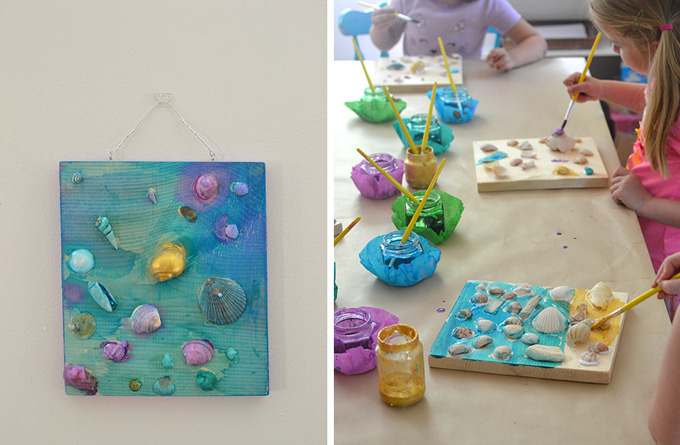
13. PAINTED SHELL COLLAGES ~ Even seashells can be painted with liquid watercolors! And of course our fave thing to paint… wood. Make these gorgeous shell collages with a few simple materials.
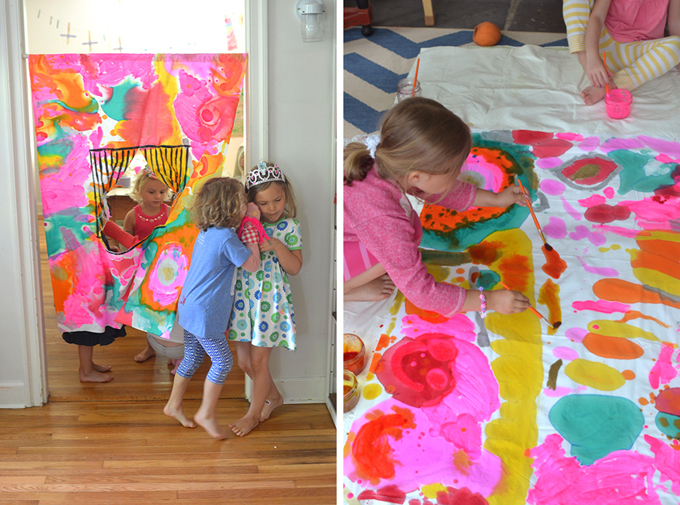
14. LIQUID WATERCOLOR ON FABRIC ~ Liquid watercolor looks so vibrant on fabric and is the perfect paint to use when making a bright and colorful no-sew puppet theatre.
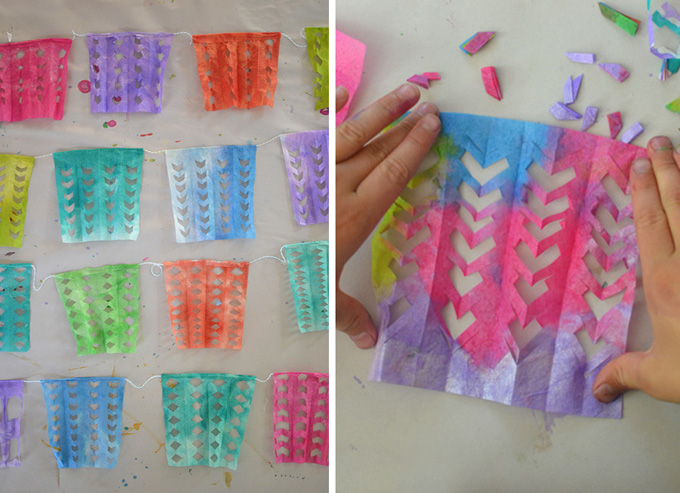
15. PAINT AND CUT COFFEE FILTERS ~ Again, coffee filters for the win! Here we cut off off the round bits to make them square, then folded and cut them like snowflakes to make this gorgeous garland!
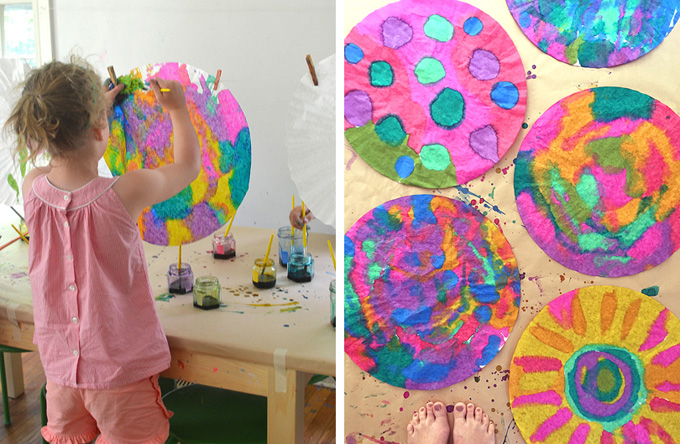
16. WATERCOLOR ON GIANT COFFEE FILTERS ~ Liquid watercolor works so well on coffee filters, I love the transparency of the material and how the watercolor just instantly seeps through to the other side. Here is a way to set up a painting experience where kids are standing and painting and using their arms and whole bodies!
. . . . . . . . . . . . . . . . . . . . . . . . . . . .
If you live in a country where you can’t find liquid watercolors, there are four things you could try. One, you could try using food coloring. You could water it down a little, or use it straight. Two, you could soak magic markers in water. I have not tried this technique, but here is a good tutorial. Three, you could combine tube watercolors with water (I used to do this before I discovered liquid watercolor). And four, you could try this!
TIP: If you want your liquid watercolor paints to last longer, water them down a bit. I don’t usually water mine down because the whole point for me is the rich, bright colors. But sometimes I do if I know the paint will be used quickly, like when splatter painting or using droppers.
I hope you give liquid watercolors a try!
xo, Bar
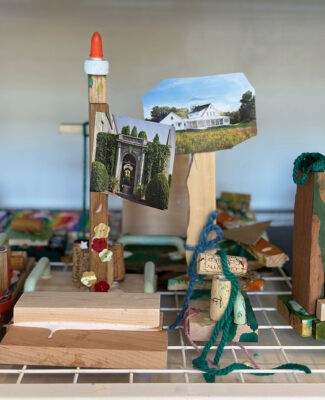
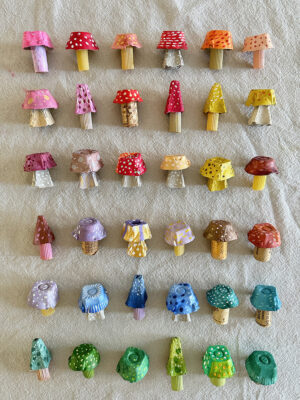
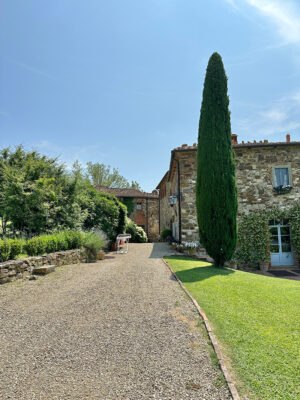

I’ve been playing with watercolors lately but have never tried liquid watercolors. These projects inspired me to go pick up some…I love the circles painting. It would be fun to make a series of those to hang in my living room. Thanks once again for all of the inspiration! 🙂
yes, definitely try them!! they are very different from palette watercolors, but i think you will love the color and the way feel on the paper. let me know how the circles go 🙂 xo bar
These are all such beautiful projects. Now the only problem is which to try first! 🙂
aww, you are too sweet! thank you for stopping over and leaving a comment, ann! let me know if you do end up trying any of these. i’m so happy to inspire! xo bar
I’m starting to gather lesson plan inspiration for Winter and spring term and came across your site. I make use of dried out Crayola markers soaked in alcohol to make fast drying intense inks for my older students but liquid watercolours would be just as exciting for my younger students. I’ve got a few ideas from this post to build on. Thank you
That’s such a great idea, Tami…making use of those old markers. I’ve seen that before but never actually tried it. Thank you for reminding me of that technique, what a great homemade supply, and probably a good substitute for liquid watercolors! Thanks for leaving a comment! xo Bar
What do you think of acrylic ink as an alternative- I live in GB?
hi Elaine, I actually don’t know that material but it sounds comparable – other than usually acrylic is not washable so just be careful with clothing. Best of luck! xo Bar
Discount school supplies sells liquid watercolors….colorations liquid watercolors in 21 different colors. Including white, silver and gold.
You can make your own liquid Watercolors by taking tube Watercolors and adding water to them
yes! I used to do that before I discovered liquid watercolor!
Regarding the color study in #9, the site that featured your guest post seems to be no longer in existence. Is there some other way for us readers to access the narrative & images? I would very much like to explore the color study with my child, but I am absolutely not an art instructor & have zero concept of what a small child’s color study is 🙂
Hi, thanks for alerting me to this broken link! I will work on adding more information to this post. In the meantime, You can simply set up a painting experience that uses just two colors in the same family at a time. Orange/yellow, Red/pink, Green/blue. You can set them up on different days, so that your child can explore just one color family at a time. I hope this helps! ~ Bar
Have you ever used Darice liquid watercolors on glass? I want to use them to turn the fog light bulbs on my vintage Mercedes yellow. How would thDouge heat from the bulbs affect the color? I also have translucent acrylic paint but don’t know which would work better. Your thoughts?
Hi, I think they make paint for glass. You would have to search for that online. But I’m not sure how it interacts with heat. Good luck! ~ Bar